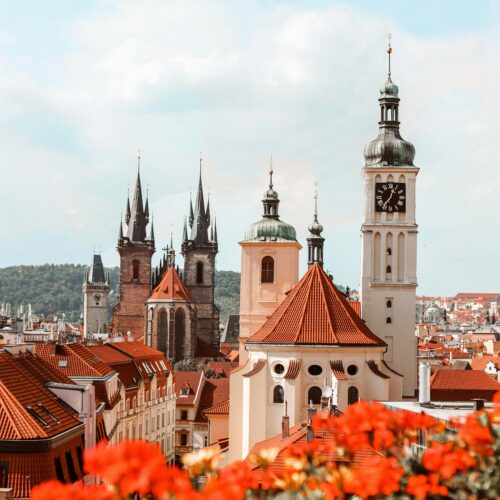Discovering the Charming Citadel, Gothic Architecture, and Dracula’s Birthplace

Sighișoara is a beautiful medieval town located in Romania. The correct pronunciation is “see-ghee-shoh-ah-rah”.
It’s nestled in the heart of Transylvania, and is a charming hamlet that transports you back in time. This UNESCO World Heritage site is famous for its well-preserved citadel, Gothic architecture, and unique cultural heritage.
As you wander through the winding cobblestone streets and admire the colorful buildings and historical landmarks, you can’t help but feel like you’ve stepped into a fairytale.
With a fascinating history and a wealth of things to see and do, Sighișoara is a must-visit destination for anyone traveling to Romania.
Here are some things to do in Sighișoara:
- Visit the Sighișoara Citadel – The Citadel is a UNESCO World Heritage site and one of the best-preserved medieval citadels in Europe. It is a unique and charming part of Sighișoara’s history and architecture.
- Explore the Clock Tower Museum – The Clock Tower Museum is fascinating in the Sighișoara Citadel. It houses many artifacts and exhibits that glimpse the city’s history and culture.
- Walk along the Covered Staircase – The Covered Staircase is a beautiful staircase connecting Lower Town to the Upper Town. It is covered by a roof, has 176 steps, and is a unique and picturesque landmark of the city.

- Take a tour of the Dracula House Museum – The Dracula House Museum is a historical house believed to be Vlad Tepes’s birthplace, also known as Dracula. The museum is filled with exhibits and artifacts related to the life and legend of Dracula.
- Visit the Church on the Hill – The Church on the Hill is a beautiful church in the Upper Town. It was built in the 14th century and featured stunning Gothic architecture, intricate carvings, and impressive frescoes.
- Enjoy traditional Romanian cuisine – Sighișoara has many restaurants that offer traditional Romanian cuisines, such as sarmale (stuffed cabbage rolls), mici (grilled minced meat), and papanasi (a sweet dessert made of cottage cheese and jam). Eating local food is a great way to experience the local culture and cuisine.
Did you know?
Sighișoara has a unique tradition of painting eggshells. Local artists use special techniques to paint intricate designs and scenes on eggshells
, creating beautiful works of art that are both delicate and stunning. They make for the ultimate souvenir if you can safely get them home.
This tradition is celebrated at the annual Egg Fair, held during the Easter holiday, where visitors can see and purchase these beautiful eggshell artworks.
A little history:
Sighișoara has a rich and fascinating history that spans over 800 years. The town was founded in the 12th century by German settlers, who named it Schäßburg. Thanks to its strategic location on the Târnava Mare River, it quickly became an important trading center.
In the 14th and 15th centuries, Sighișoara was a major cultural and intellectual center and home to many famous artists, writers, and scholars. During this time, the town flourished, and many of its most iconic landmarks, such as the Clock Tower and the Church on the Hill, were built.
In the 16th century, Sighișoara became part of the Principality of Transylvania and played an essential role in the fight against the Ottoman Empire. During this time, the town was fortified with walls and towers, which still stand today and give it its distinctive appearance.
In the 1800s and into the 20th centuries, Sighișoara saw significant changes as the town became part of Romania and experienced modernization and urbanization. However, its historical landmarks were well preserved, and the town continues to be a popular destination for tourists and history buffs.


